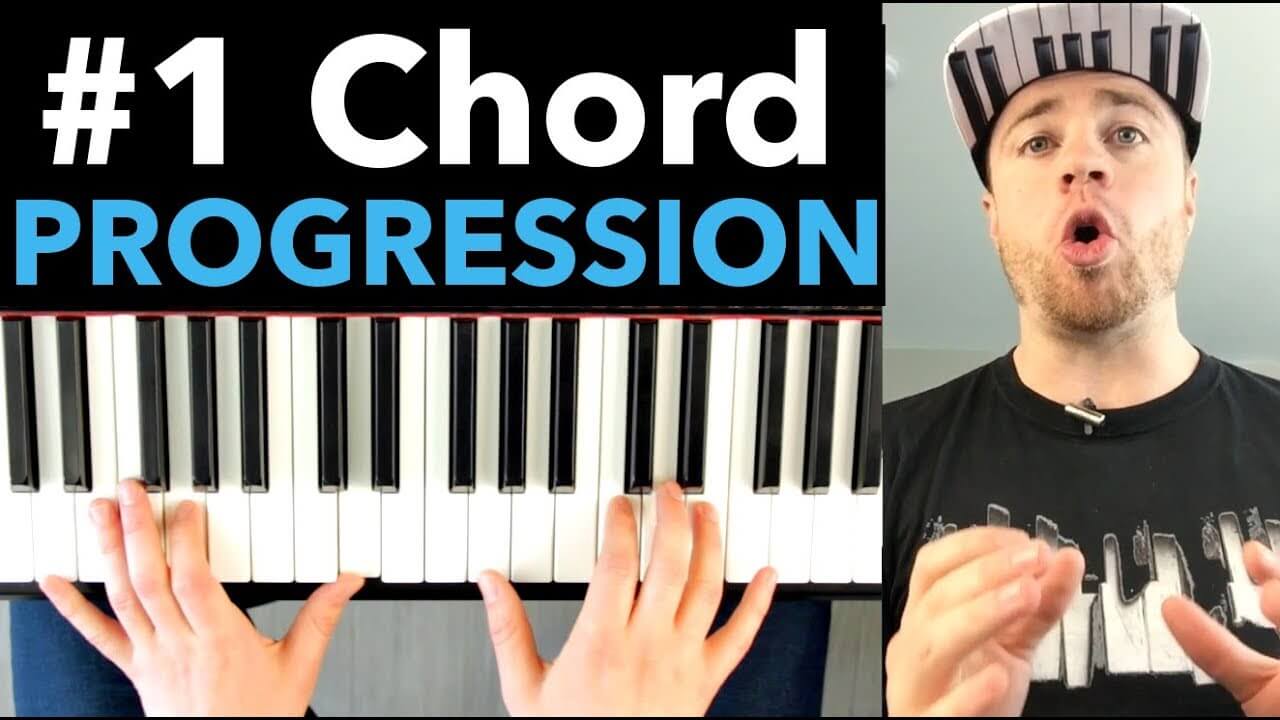Today I’m going to go over the #1 best chord progression for beginners to learn on piano. First, I’m going to tell you why it’s the best and why you should learn it before any other chord progression. Then, I’m going to tell you about some simple variations you can add to the progression. Next, I’ll tell you about some very easy ways to improvise over the progression.
To hear how this entire piano chord progression will sound like, fully fleshed out, check out the video above.
Why You Should Learn This Chord Progression First
The biggest reason you should learn this chord progression first is that it’s very common so you can learn TONS of cons with just this one progression. If you’ve ever seen those YouTube videos where it says something like “Guy plays 100 songs with one chord progression” this is the chord progression they use.
The second reason you should learn this chord progression first is that it is very easy to add simple “chord variations” to it to spice it up.
The Exact Chords You Need
This particular chord progression is known as a 6 4 1 5 chord progression. Chord 1 start with an A Minor Chord, A C E. Chord 2 is an F Major Chord, F A C. Chord 3 is a C Major Chord, C E G. Chord 4 is a G Major Chord, G B D. You can hear how this all sounds in this video.
Also, if you’re not a music theory nerd like I am, I suggest you print off the Major Chords and Minor Chords cheat sheets in my Piano Superhuman Course. Everybody always asks, “Is it really free?” Yes, it’s 100% free and you can get the cheat sheets and all the lessons there.
Chord Variations
Most blog posts would only mention the chord progressions and tell you to go play them, but I want to write the best blog post on this progression that really tells you about the ins and outs of it. So, not we’re going to go into what I call chord variations.
The first thing you can do is change the chord you start on. With our chord progression – A Minor, F Major, C Major, and G Major – we just start at F Major instead of A Minor.
For the second variations, we can use the exact same technique, but this time start with the C Major chord.
Now, we have three chord progressions for the price of one! With the same amount of practice time you can play all these chord progressions. Next, we’ll get into some chord substitutions.
Chord Substitutions
Chord substitutions are an easy way to mix up the chord progression. We’ll go back to our original progression, but instead of the G chord, we’re going to play an E Major chord. This makes it sound a bit more edgy. So, now it’ll be Am F C E.
A lot of times, when I’m composing, I like to stack these two progressions together. I’ll start with the normal Am F C G and then go right into the Am F C E. It really gives the audience a bit more spice and flavor.
Another progression I use all the time, which makes the song sound darker, is changing the C Major chord to a D Minor chord.
One other thing you can do is combine the last two progressions we did into a “Super Dark” combo variation. C becomes Dm and G becomes E. You can hear how this sounds here.
Remember, all of these chord progressions are simple variations off our original chord progression.
Improvisation Tricks
Now that we have a bunch of different chord progressions, I want to tell you how to improvise very easily over the progressions, even if you’re a beginner. I’ll guarantee you can easily learn this in less than a week.
First, I want to tell you about the foundation of this improvisation. Here’s the trick – Only use the notes C D E G and it will sound good. You can play these notes at any time in the progression and it’ll sound good. The music theory behind this, is that it’s the Pentatonic Scale, it’s just missing the A. You could play the A, but if you’re a beginner I suggest you simplify it and just play C D E G.
How do we add a little more spice to this chord progression?
The first thing we do is add a left hand pattern. I wrote another post about this with a video as well you can check out and it’s called the Secret Sauce Left Hand Pattern. If you follow the exact steps I outline you can learn this pattern in only a few days.
Money Notes
Another thing you can do is add “Money Notes.” These are notes that can be used sparingly to spice up the improvisation.
The first money note is an F. Whenever you play the F, you want to move down to the E right away. This is what’s known as a 4 3 suspension. If you don’t know music theory, don’t worry about it, just know that anytime you play an F you move right down to an E. It creates a very emotional song. Here’s what it sounds like.
The second money note is a B. The B always goes to the C. This is called a “Leading Tone” in music theory. If you’re a beginner, don’t move your thumb, play it with your 2nd finger. This also gives a sentimental, emotional sound to it.
Octave Transposition
The last improvisation tip is called “Octave Transposition.” Instead of playing CDEG in the position on the piano where you’ve been playing it, simply move your hand up to a higher octave. You’ll notice that you’re playing the exact same thing, just up another octave.
You could also move your left hand around as well. There’s just so many ways you can vary the progression! Put in the time now and I promise it’ll be worth it!
If you want more in-depth piano lessons, you can sign up for my free Piano Superhuman course which includes tons of tactics and strategies for learning piano faster.

